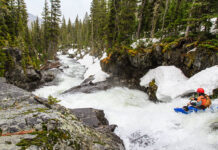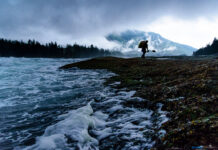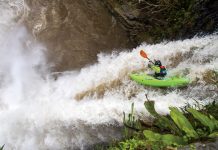For the best way to kayak small drops, look no further than the boof. Boofing lifts you clean off the lip of a drop and prevents your bow from diving on landing. Even in the best conditions, you need to choose the right boof and pay attention to the bow–stern trajectory of the boat, because landing dead flat is a real shock. Read on for an introduction to this fine art, plus two types of boof to try for yourself.
How to run small drops in your kayak
Why boof?
Most of the time, inadvertent penciling off small drops works out—but when it doesn’t, the results can be crushing. If something is lurking below or when you are unsure what is down below, keep the bow up on the surface.
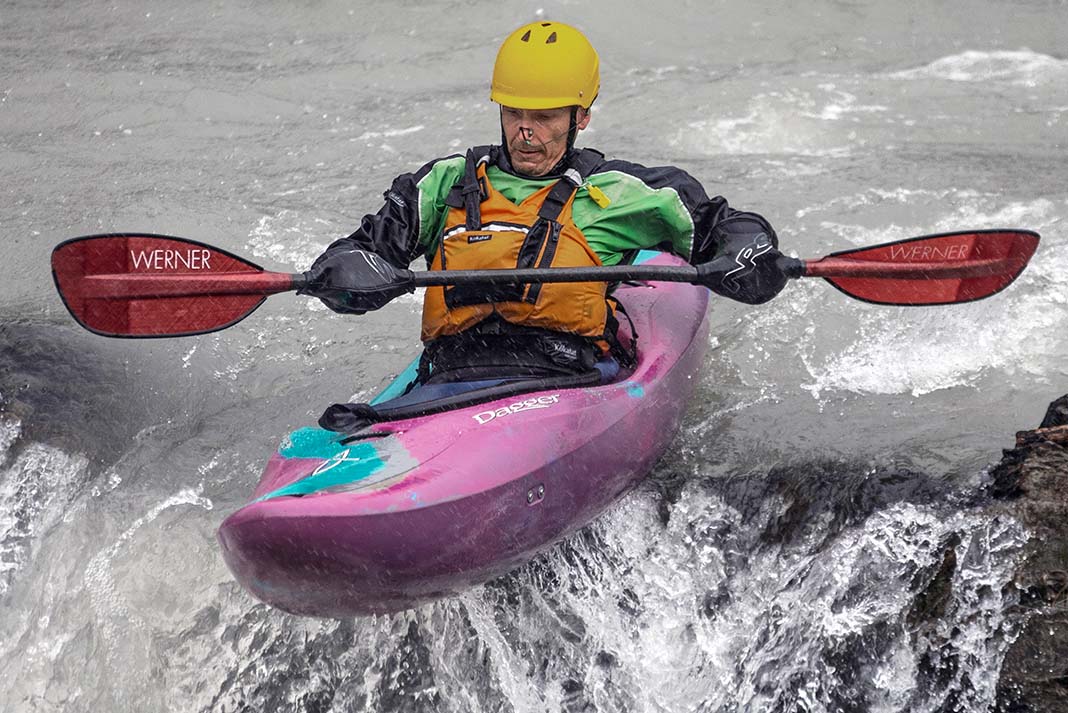
Small drops and pourovers with sticky recirculations are good places to boof. You can land on the boil, skip off and ricochet clean of the drop. This is great for tighter recirculations or when you have a must-make move immediately downstream. A clean boof means you are more likely to land in control and on line for the next move.
Timing is critical when running small drops and practice is essential to having a reliable boof. When on the river, utilize every possible object or drop to learn to launch the bow high and land clean.
2 types of boof to try
1 Sweep-and-leap boof
On small drops with a smooth green lip, a well-timed sweep and pull stroke can lift the boat clear of the water and allow for a controlled launch. Approach the drop slowly, so you are in control and the boat is loose on the water rather than embedded in the flow or caught in its own wave. The bow should be somewhat off perpendicular to the recirculation below—say 30–45 degrees or so.
As the bow reaches the lip, sweep the bow downstream and up, into the air, off your stern upstream edge. When the boat extends out over the drop, thrust your hips forward, transition to the opposite edge and throw your upper body forward to help the stern clear the falling water. You land on an outstretched power stroke on the side opposite to the initiation sweep.
On bigger drops, you’ll need less sweep, or more angle to the drop, because you are falling further and the boat has more time to spin.
2 Power boof
Sometimes, there is no substitute for a power boof. You can execute power boofs on almost all drops. Powerful strokes, good strength and a light boat make power boofing easier. The concept is to pull with a lifting power stroke, so the bow rises as you fall.
Start with some forward lean, rotate the upper body with a long reach to the bow for a forward stroke, then wait until the boat starts to drop. With your paddle, reach over the lip of the drop into the curtain of falling water, pull and lift with your knees. Keep your power stroke close to the boat and don’t lean too far back—pull with the upper body more or less neutral, heaving the boat forward as it teeters off the lip.
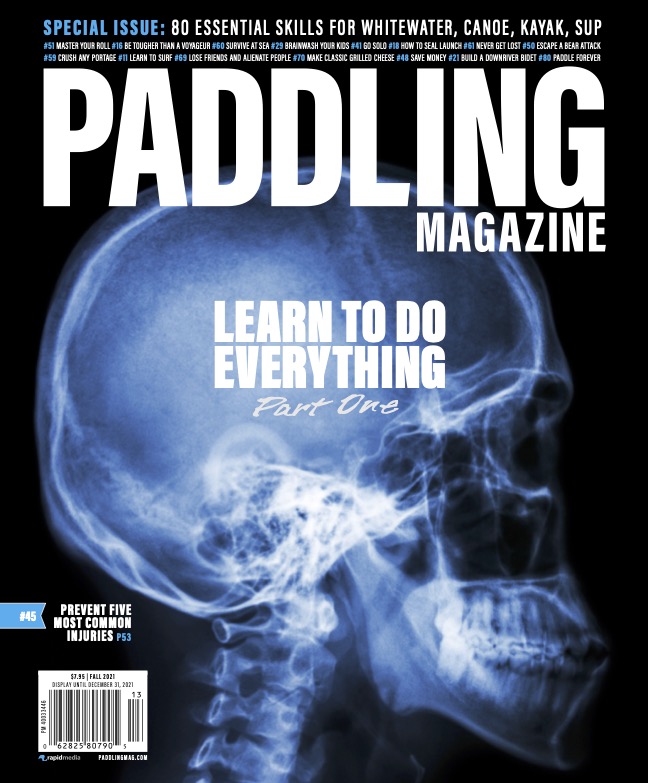 This article originally appeared in Paddling Magazine Issue 65. Subscribe to Paddling Magazine’s print and digital editions here, or download the Paddling Magazine app and browse the digital archives here.
This article originally appeared in Paddling Magazine Issue 65. Subscribe to Paddling Magazine’s print and digital editions here, or download the Paddling Magazine app and browse the digital archives here.
You need to choose the right boof to run small drops in your kayak. | Feature photo: Tyler Toohey




